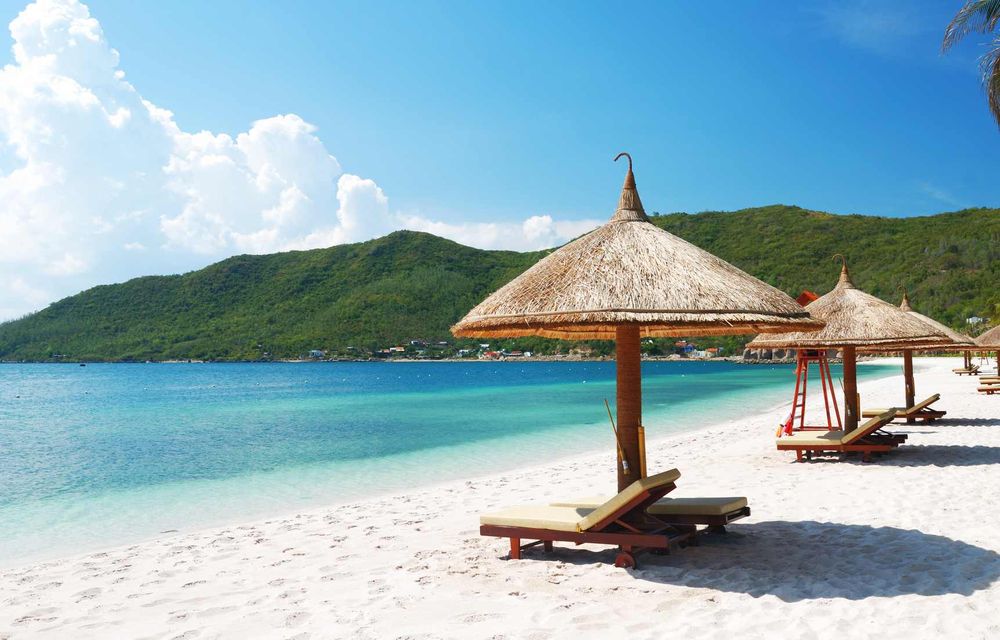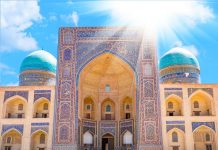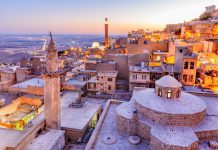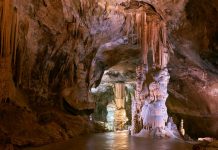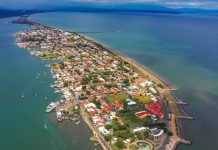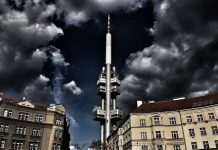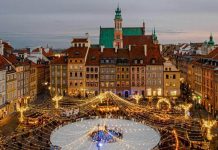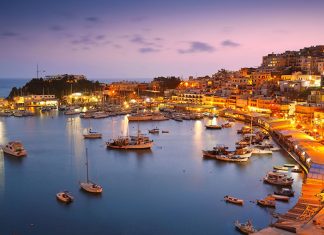The main entryway to the country, the Central Valley offers a variety of tourist, cultural and natural attractions, including Costa Rica’s best museums: the Gold, Jade, National, Costa Rican Art, La Salle Natural Science, University of Costa Rica Insect and Children’s Contemporary Art and Design Museums. In addition, this region is home to the architectural jewel of Costa Rica: the National Theater. All of these are located in the country’s capital. The national parks located in the Valley—Poás, Braulio Carrillo, Irazú and Turrialba—protect the region’s main volcanoes. All have road infrastructure so that visitors can enjoy their birds, natural landscapes, craters and forests.
The country’s capital, San José, is the seat of most government services; however, the provincial capitals—Alajuela, Heredia and Cartago—offer a variety of quality commercial and tourism services. As a tourism zone, the Central Valley features two extraordinarily beautiful areas that in and of themselves are true tourist destinations: Turrialba and Valle de los Santos. The rural towns, for their part, are highly picturesque, and offer a glimpse of old Costa Rica, with their houses of bahareque (a building material similar to adobe but made of cattle dung and straw), large coffee plantations, sugar mills and dairies.
Tourist Attractions
TURRIALBA
Several cities developed and prospered as a result of the building of the railroad to the Caribbean; Turrialba is one of these, and its architectural, spatial and ethnic makeup is different from other towns. Declared a City of National Archeological Interest, this town is the entryway to the Costa Rican Caribbean. Two universities are located here: the Tropical Agronomy Research and Learning Center (CATIE), of international influence, and the University of Costa Rica. Turrialba’s outskirts contain appealing rural communities such as Santa Cruz, where homemade Turrialba cheese is produced, La Suiza and Aquiares, as well as the rapids of the Reventazón and Pacuare rivers.
RÍO PACUARE
Flowing out of the Cordillera de Talamanca, this river offers excellent rafting. The run is suitable for big and small whitewater rafters, and parts of the trip offer stunning scenery.
VALLE DE OROSI
This highly scenic tourism circuit features a series of viewpoints showing two different areas of the valley, including the towns of Orosí and Ujarrás, the first two Spanish settlements in the era of the Conquista. Here, visitors can see two of the only colonial buildings in the country: the renamed Ujarrás Ruins and the beautiful Iglesia de Orosí, with its considerable treasures in altarpieces, sacred images and other historical elements.
Because of its strategic location, the Reventazón Valley, as it is also called, is a mandatory stop with many travel agencies, which find here a high-quality tourism destination where tourists can enjoy fishing for trout and langoustines, rent boats, soak in hot springs and take in agricultural plantations and works of engineering. In addition, many lodging facilities have been established in this area over the last few years.
RÍO REVENTAZÓN
At 152 kilometers long, the Reventazón features stretches perfect for rafting, fishing or canoeing. The thick greenery on the river’s banks adds to the enjoyment of a trip down its waters. The mid zone of this river is the Cachí Hydroelectric Plant’s largest water supply source.
CACHÍ HYDROELECTRIC DAM AND RESERVOIR
This dam began operating in 1966, generating 32,000 kilowatts of power, which doubled one year later. Its innovative use of the Reventazón’s waters makes it the first of its kind in Central America. The reinforced-concrete structure, 79 meters tall and 186 meters wide, draws the attention of both national and international tourists traveling through the Ujarrás Valley. Several leisure and eating establishments have arisen around the reservoir to facilitate visits from local and foreign tourists.
OROSÍ HOT SPRINGS
According to the Romanian specialists who assessed Costa Rica’s hot springs in 1981, these waters are effective for relieving muscular pain and reducing stress. Orosí has two pools with good facilities for the national tourists who come to bathe in the waters. Around the Mirador de Orosí, a large outfit has been established that offers a number of quality services and taps into other hot springs highly beneficial to the body.
OROSÍ CHURCH AND COLONIAL MUSEUM
Built in 1743 by Franciscan missionaries, this is the only colonial building in good condition in Costa Rica. Many works of art can be admired inside, including paintings, sacred images and the altar. The adjacent museum houses pieces and artifacts used by the Franciscans during the evangelical period, displaying something of the lifestyle of that era. The site was declared a National Monument in 1985.
LOS NOVIOS WATERFALL
Known for the many anecdotes about the origin of its name (“The Couple”), this waterfall adorns the slopes of Picacho hill, and can be viewed from the highway to Ujarrás Valley or the Costa Rica Tourism Board Ujarrás viewpoint.
RUINS OF THE IGLESIA DE LA PURÍSIMA CONCEPCIÓN IN UJARRÁS
This church’s construction was ordered during the second half of the 16th century by the Governor of Costa Rica at that time, Miguel Gómez de Lara. The Franciscan missionaries carried out their labors in Ujarrás around the church. Declared a National Monument in 1920, today the church is a visitor attraction of great architectural and historical interest within the Reventazón Valley circuit.
CARTAGO
“The Very Noble and Very Loyal City of Cartago” was Costa Rica’s first capital, a distinction the city held until 1823. Cartago enjoys a good level of commercial development and state services. Despite seismic activity that has caused considerable damage throughout the city’s history, several important architectural structures still remain. Cartago is home to Costa Rica’s patron saint, Our Lady of the Angels.
OUR LADY OF THE ANGELS BASILICA
Built in 1921, this church houses a small shrine where the faithful go to worship Costa Rica’s patron saint in hopes of a miracle, to be healed or to give thanks for prayers answered. A mixture of Roman, Arabic and Gothic styles, the basilica has Italian floors and 32 stained-glass windows from Germany depicting the Virgin, Heart of Jesus and the 15 Stations of the Cross.
PILGRIMAGE IN HONOR OF OUR LADY OF THE ANGELS
Each year, starting several days before August 2, Costa Ricans from all over the country make pilgrimages from their homes to Our Lady of the Angels Basilica in Cartago, to fulfill a promise or ask for help with health or financial problems.
COLEGIO SAN LUIS GONZAGA
Founded as a learning institution in 1842, San Luis Gonzaga has produced several noteworthy Costa Rican political and professional figures. Several earthquakes destroyed the original facilities, with the earthquake of 1910 finally spurring the move to the school’s present-day location. Dating back to 1920, this building demonstrates a neoclassical influence, and was declared of Historical and Architectural Interest in 1989. The facilities house a museum featuring archeological, colonial-furniture, scientific and ethnological collections.
IGLESIA DE QUIRCOT
Located in the community of Quircot, this church is around 100 years old. A typical adobe construction, it was declared a Relic of Historical-Cultural Interest in 1986.
CASA DE LA CIUDAD DE CARTAGO (PIRIE BUILDING)
The first floor was built in 1882, with the second added in 1900. This is one of the few buildings to survive Cartago’s earthquakes. Today it is used for a number of Cartago’s artistic and cultural activities.
PARROQUIA DE SANTIAGO APÓSTOL (CARTAGO RUINS)
Construction resumed in 1904 after thirty years of stoppage; however, the Santa Mónica earthquake on May 4, 1910, put a definitive end to Cartago’s interest in completing the building. The site is visited by various travel companies bringing a constant stream of international tourists wanting to learn about the ruins’ history and see the architecture, bells and colonial streets.
CRISTO DE OCHOMOGO
Located in Cerros de Ochomogo, this monument commemorates the Costa Ricans who died from March to April of 1823, when the “imperialists” who supported union with Mexico’s Iturbide Empire did battle with the republicans who believed in complete independence from other countries. As a result of this confrontation among Costa Ricans, Cartago lost its title as the country’s capital to San José.
CORDILLERA DE TALAMANCA
Made up of tertiary sedimentary marine rock, plutonic rock and volcanic domes from the upper Miocene, this mountain range runs on a northwest-to-southeast axis. Oak forests cover some areas, with other noteworthy species including magnolia, cacho de venado and pagoda. Plains bare of trees also exist, inhabited by squat shrubs, lichen, grasses, bamboo, ferns and myrtles. Common wildlife includes tapirs, ocelots, jaguarondis and wildcats, as well as mountain hares, goats, kinkajous, raccoons, coatis and agoutis. The range’s highest peaks are Chirripó at 3,821 meters above sea level and Kamuk at 3,554 meters above sea level.
RÍO SAVEGRE, SAN GERARDO DE DOTA
In this river’s cold waters, just a few kilometers from its source, visitors can fish for rainbow trout, or simply take refuge on its banks to relax or capture the river’s beauty on film or video. The Savegre features lovely scenic areas, as well as bird-watching—especially quetzals.
CERRO BUENA VISTA OR DE LA MUERTE
Part of the Cordillera de Talamanca, this mountain has an altitude of 3,451 meters. If the weather is kind, both Pacific and Caribbean coasts can be seen from its heights. The mountain features an interesting dwarf forest, and temperatures here can drop to zero degrees Celsius. The upper part of the mountain features a possible sub-volcanic dome, Cerro Jaboncillo (3,000 meters), the result of lava emplacement during the Miocene.
LOS JULIANES WATERFALL
Main entry is through the Santa María de Dota area. The access road to Los Julianes runs through a region of virgin mountains called Fila Bayoneta. The waterfall is around 90 meters tall.
SAN GERARDO WATERFALL
To get to this 40-meter waterfall, visitors walk approximately two and a half hours through primary forest, observing spectacular plant and wildlife species.
VALLE DE SANTA MARÍA DE DOTA
Seat of the Dota canton, Santa María is set in a valley surrounded by mountains. Converging here are the access roads to other communities such as Copey, San Marcos de Tarrazú and San Pablo de León Cortés. The population is concentrated on the banks of the Río Parrita, in blocks like those used in old Spanish towns. Historical and natural attractions include: Santa María National Park, with its Monument to the Fallen in the Revolution of 1948; the Escuela República de Bolivia, which was the General Barracks for troops during the revolution; and the Dota hills offering lovely panoramic views of the valley.
Existen diversos atractivos históricos y naturales: el Parque de Santa María, declarado de interés con su Monumento a los Caídos en la Revolución de 1948, la Escuela República de Bolivia fue Cuartel General de las tropas en la Revolución y los cerros de Dota de los cuáles se observa una hermosa panorámica del Valle.
FEAST OF SANTA MARÍA DE LA CUEVA
This traditional religious feast involves activities very uncommon in the rest of the country, such as fireworks, typical foods for sale, running with the bulls a la tica and various competitions: carreras de cintas, el palo encebado, juego de la bruja and others. Events go on for a week, ending with the chinga, in which everyone involved in the activities participates. The celebration takes place on February 2 of each year.
VALLE DE COPEY
At 1,853 meters in altitude, this small valley is home to the community of Copey, and features unique conditions for hiking, photography, horseback riding, fishing, bird-watching and other leisure activities. Visitors can enjoy flower farms and apple orchards, typical architecture, natural landscapes and more. Lodging and dining options are offered.
CAÑÓN–SANTA MARÍA DE DOTA PICTURESQUE ROAD
The first access route to Santa María de Dota, this historic road features forests, rivers, agricultural landscapes and interesting communities such as La Cima and Copey, up to its final destination of Santa María.
OJO DE AGUA REFUGE, DOTA
Ojo de Agua was built in 1910 as a rest stop for travelers making the trip between San Isidro de El General and San José. It has been declared a Historical Relic, and may be visited at its location at kilometer 76 on the southern Interamerican highway. Today, the place is used as a rest stop where groups of riders break their journeys throughout the year.
MONUMENT TO THE HEROES FALLEN IN 1948
Located in Santa María de Dota’s Central Park, this piece by artist Luis Umaña Ruiz depicts a woman protecting a group of men and women within her arms, symbolizing Costa Rica safeguarding its citizens. The piece weighs around 90 tons.
SAN JOSÉ
At 1,149 meters above sea level, San José enjoys an average temperature of 24 degrees Celsius—an ideal climate for short trips to the Carmen, Catedral, Merced and Hospital districts. Here, visitors can admire the lovely architecture of several buildings that have been declared National Monuments of cultural, historical or architectural interest, including the Post and Telegraph Building, the National Theater, the Children’s Museum, the Blue Castle and others. The city offers high-quality options in dining and accommodations, from bed and breakfasts and popular sodas (small restaurants serving local and fast food) to fashionable bars for nightlife, complemented with cinemas and theaters. San José’s December religious feasts and public festivals are traditional events that may be enjoyed by visitors.
NATIONAL THEATER
Built between 1890 and 1897, this edifice’s construction costs were paid for by the Costa Rican people through import taxes. The National Theater is home to valuable pieces by Italian artists, and is still in good condition after 100 years. The pride of Costa Ricans, the Theater is the center of the country’s main cultural, artistic and political activities, and was declared a National Monument in 1965.
MÉLICO SALAZAR THEATER
The Mélico Salazar Theater is housed in a building that has been declared of Historical and Architectural Interest. Its purpose is to promote the artistic expression of popular culture, and to provide access to its shows to the broadest possible sector of the population..
METAL BUILDING
This hundred-year-old architectural jewel of metal has been used from its beginnings as a house of learning for boys and girls. It was declared of Historical and Architectural Interest in 1980.
TEMPLE OF MUSIC
Located in Parque Morazán, this 1920 neoclassical building made of reinforced concrete features almost perfect acoustics. For many years it was the meeting place for the San José community, where concerts by the Symphonic Orchestra and the Military Band were enjoyed and the traditional new year greeting was exchanged.
NATIONAL MONUMENT
Inaugurated on September 15, 1895, at what was known as the Plaza de la Estación, the National Monument is a piece by French sculptor Louis Carrier commemorating the heroic deed of the campaign of 1856-1857. The figures represent the Central American countries pursuing a North American invader attired like the slavers represented by William Walker.
NATIONAL MUSEUM (OLD BELLAVISTA BARRACKS)
Construction of the Army General Barracks took place between 1916 and 1930. In 1949, after the abolition of the army, the building was converted into the National Museum. Its fundamental purpose is to promote the study, conservation and display of the country’s flora and fauna. Currently, the museum’s main themes are archeology, national history and natural history. Located on Calle 17 between Avenidas Central and Segunda, the museum is open to the public Tuesday to Sunday from 9 a.m. to 5 p.m.
CHILDREN’S MUSEUM
Dating back to 1910, this modern museum is designed especially for the children of Costa Rica. The cultural and scientific activities that take place in its more than 50 display rooms are of great impact to the country. Located 800 meters north of the Banco Central in San José, the museum is open to the public Tuesday to Sunday from 9 a.m. to 5 p.m.
JADE MUSEUM
This museum houses a collection of pre-Columbian art (gold, ceramic, jade and stone), and is the only museum displaying indigenous jade artwork in the Americas. It is located in the Instituto Nacional de Seguros (National Insurance Institute) building.
GOLD MUSEUM
The collection of indigenous gold objects displayed at the Gold Museum is considered one of the most valuable in the world. The museum is located in the Plaza de la Cultura, adjacent to the Tourism Information office of the Costa Rica Tourism Board. Located on Calle 5 at Avenida Central, the Gold Museum is open to the public Tuesday to Sunday from 10 a.m. to 4:30 p.m.
OUTDOOR ART FESTIVAL, SAN PEDRO, MONTES DE OCA
This nonprofit event’s only goal is to take art to the streets. The event takes place in San Pedro de Montes de Oca, on Calle 9 in San Pedro opposite the Banco Popular, between 9 a.m. and 5 p.m. The Outdoor Art Festival is organized with growing success by the Galería de Ulises.
According to Ulises Castillo, the event’s driving force, for two days the streets and sidewalks become a display area for the work of 80 plastic artists, including Ángel Lara González, Rafael García, Domingo Ramos, Emilia Cersósimo, Joaquín Rodríguez del Paso, Olger Villegas and Fernando Carballo. Event production is undertaken by the participants.
MUSEUM OF COSTA RICAN ART
The old La Sabana Airport building is the home of this museum, which normally displays diverse collections of plastic art. On the second floor of the building, the Salón Dorado features a wooden mural depicting the country’s history from the Amerindian era to the year 1940. Located on Calle 42 at Avenida Segunda, La Sabana, the museum is open to the public from 9 a.m. to 5 p.m.
PHILATELIC AND NUMISMATIC MUSEUM OF COSTA RICA
Located in the San José Central Post Office building, this museum displays a collection of postage stamps produced in Costa Rica, as well as a recreation of an office from the last century, complete with equipment used for the first communications in the country.
UNIVERSITY OF COSTA RICA INSECT MUSEUM
This museum displays an example of Costa Rica’s entomological diversity, and is located in the basement of the Faculty of Musical Arts at the University of Costa Rica.
LA SALLE NATURAL SCIENCE MUSEUM
With an outstanding ornithology, entomology and malacology collection, this museum displays around 18,000 attractive specimens. Four display rooms exhibit mammals, fish, reptiles and shells; there is also an archeological display room. Located on the southwest side of La Sabana Metropolitan Park, the museum is open to the public Monday to Saturday from 7:30 a.m. to 3:30 p.m. and Sunday from 9 a.m. to 4 p.m.
MUSEUM OF CONTEMPORARY ART AND DESIGN
The administration that designed this project defined it as the first space set aside specifically for circulation, research and reflection on national and international contemporary art in its diverse manifestations. Since 1994, the museum has put on more than 50 exhibitions generated by national and international curators, and has organized important traveling displays, including the first exhibition of contemporary Central American art. Located in San José in the Centro Nacional de Cultura (CENAC)—a complex of restored buildings—the museum is open to the public Tuesday to Sunday from 10 a.m. to 5 p.m.
POPULAR CULTURE MUSEUM
This museum is located in Santa Lucía de Barva, Heredia, in the house of former president Alfredo González Flores. Its fundamental objective is to disseminate and preserve the traditions and identity of the Costa Rican people. The museum also shows visitors the building methods of colonial houses made with adobe and bahareque. A National Heritage, the Popular Culture Museum is open to the public Tuesday to Sunday from 9 a.m. to 5 p.m.
INBIO (BIODIVERSITY INSTITUTE)
Dedicated to natural research in the country, INBIO’s achievements have won the institute several international awards. Located in Santo Domingo de Heredia, the campus features tourist facilities and a Biodiversity Park.
NATIONAL CULTURE CENTER – CENAC (OLD NATIONAL LIQUOR FACTORY)
One of the oldest buildings in the country, dating back to 1853, CENAC is made up of several facilities, including the Ministry of Culture, Youth and Sports, the Fanal Theater, Theater 1887 dedicated to dance, the Museum of Contemporary Art and Design, the Stone Gateway and the Sundial.
IGLESIA DE SAN ISIDRO DE CORONADO
This structure of German origin was unloaded in late 1930 at the Pacific train station; from there it was transported in oxcarts and deposited in the plaza of San Isidro, Vázquez de Coronado canton, in front of which the neo-Gothic church was erected. The arrangement of the building’s principal façade shows that it has three naves. A series of images adorn the main entryways and the lateral facades. The building was finished in 1934; however, the date of completion is considered to be 1937, when the bells were blessed in a solemn consecration ceremony.
JOAQUÍN GARCÍA MONGE MUSEUM
This museum displays a house from the 19th century made of adobe and caña brava (a giant grass) secured with bejuco and cucharilla (types of liana), colonial-style windows and wood fastened with hand-forged nails. The museum features a series of rooms distributed by geographic and historical context of García Monge’s time.
OUTDOOR ART EXHIBITION, SAN RAFAEL, ESCAZÚ
The Outdoor Art Exhibition takes place in San Rafael de Escazú once a year, showing a variety of paintings and sculptures by almost 200 artists, in addition to the participation of several art galleries that strengthen the exhibition. Jewelers, photographers and restorers are also present, using the opportunity to sell their work. The event allows new artists to interact with nationally recognized artists.
SANTA ANA
Situated between the Escazú and Mora cantons at the foot of the Escazú and Puriscal hills, Santa Ana sits at an altitude of 904 meters above sea level, and enjoys a warm, dry climate. Its proximity to the capital, as well as Escazú, Belén and Alajuela, has enabled the development of a variety of dining and lodging options, including bed and breakfasts. The community combines agriculture, especially onions, with clay handicrafts, making Santa Ana a must-visit destination that can be enjoyed along with typical towns such as Piedades and Río Oro.
UNIVERSITY FOR PEACE
The administration of President Rodrigo Carazo (1978-1982) got the ONU to establish the University for Peace in Costa Rica in 1980. Today the campus has ample facilities, and studies there are directly related to aspects of peace and democracy. Also found here is the Monument to Peace, which highlights the work of different Costa Rican leaders in the interest of peace. The area around the monument is a lovely place for picnics and walks along nature trails featuring educational signs. The university is located seven kilometers from Ciudad Colón in the community of Rodeo.
PURISCAL
West of San José, Puriscal features irregular topography. Santiago, the seat of the canton, has an altitude of 1,105 meters above sea level. Puriscal is a great place to visit, thanks to its various attractions. The Quitirrisí Indigenous Reservation, just before Santiago, offers handicrafts made by members of this ethnic group. There are also typical villages, traditional food and drink, tobacco plantations, natural landscapes and various handicrafts made of wood and other materials. A new attraction is La Cangreja National Park, which features a variety of natural attractions, some of which are unique in the world.

